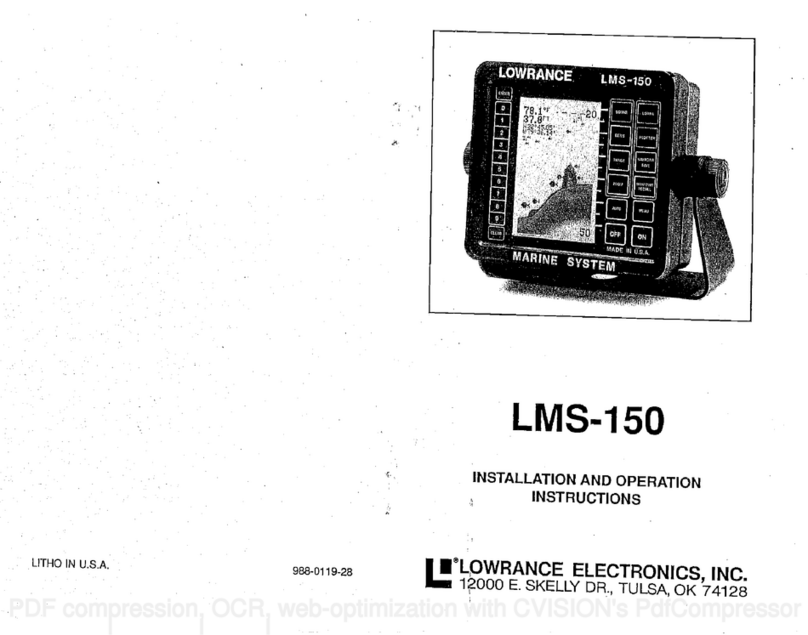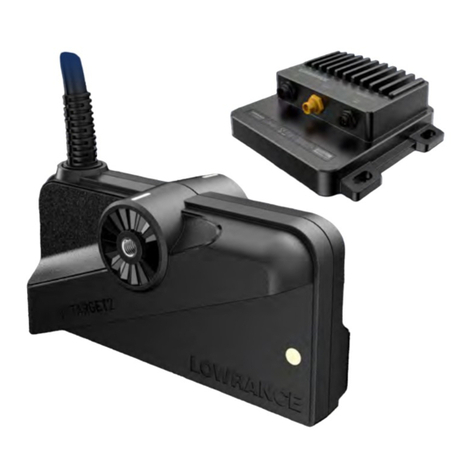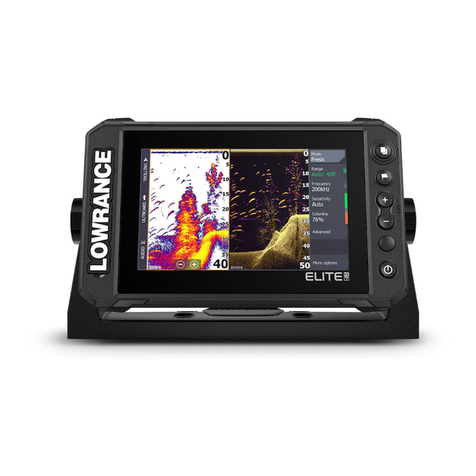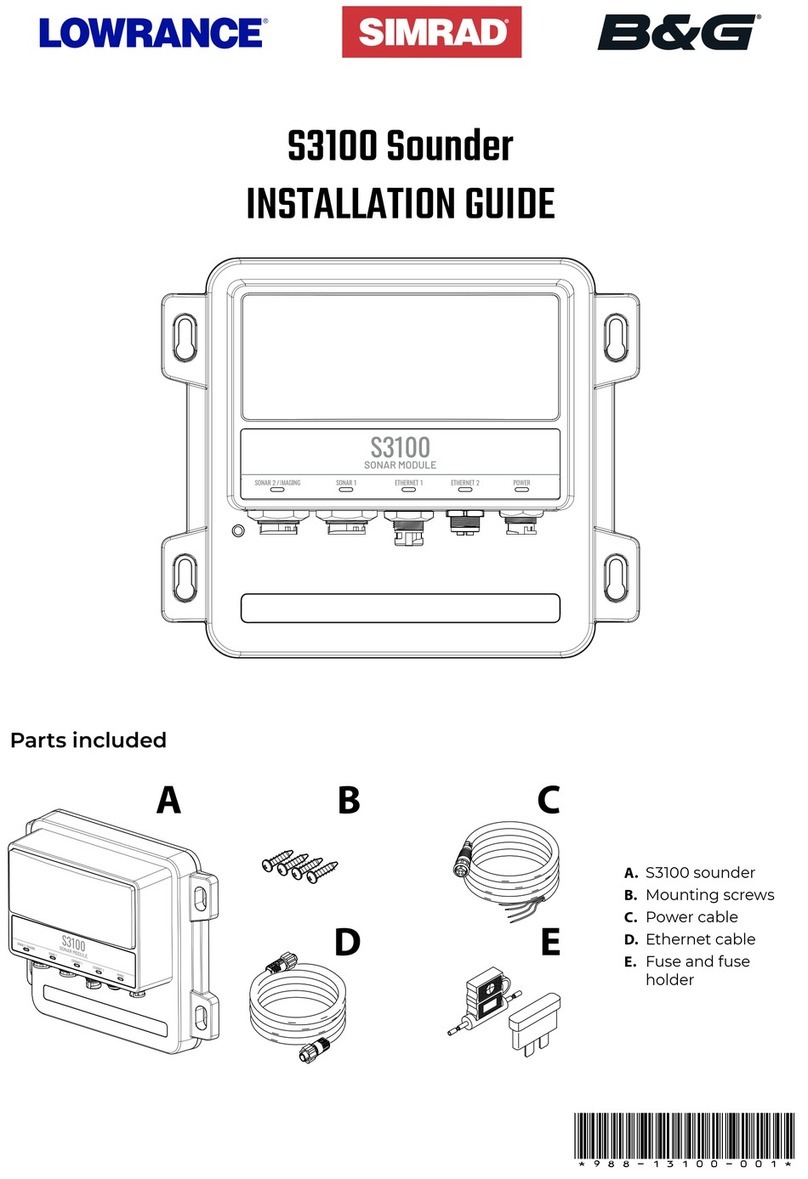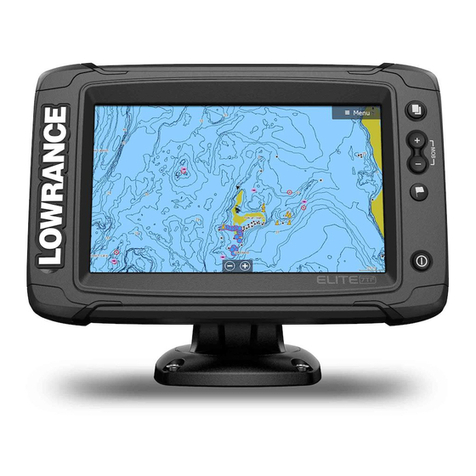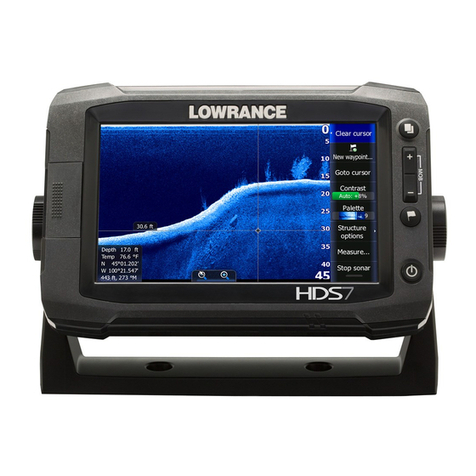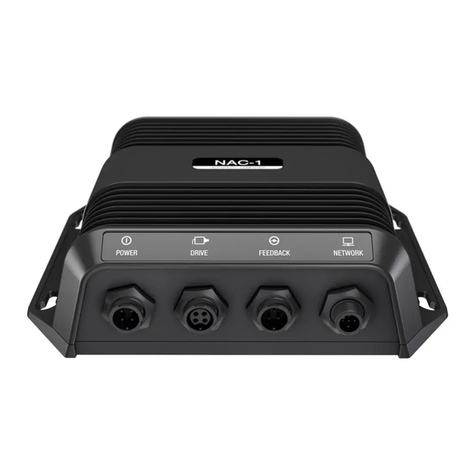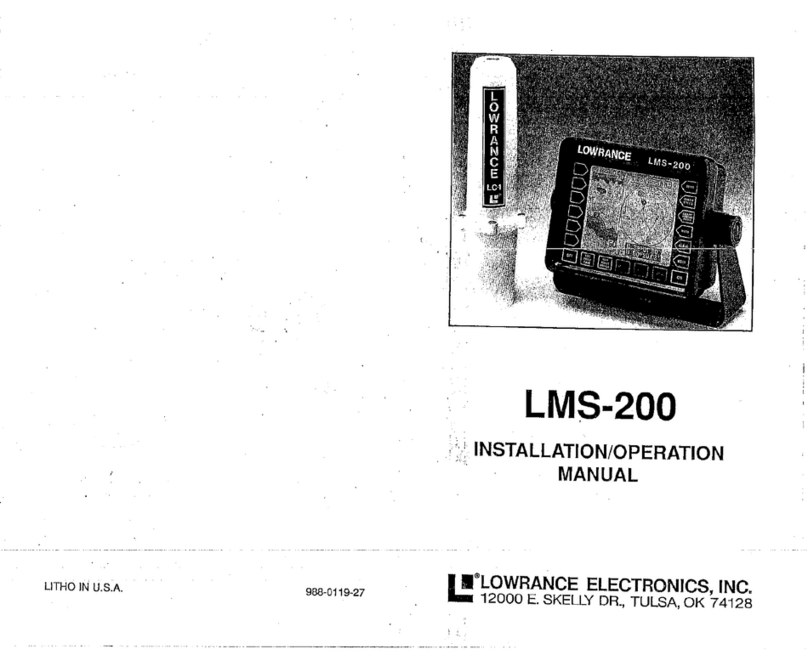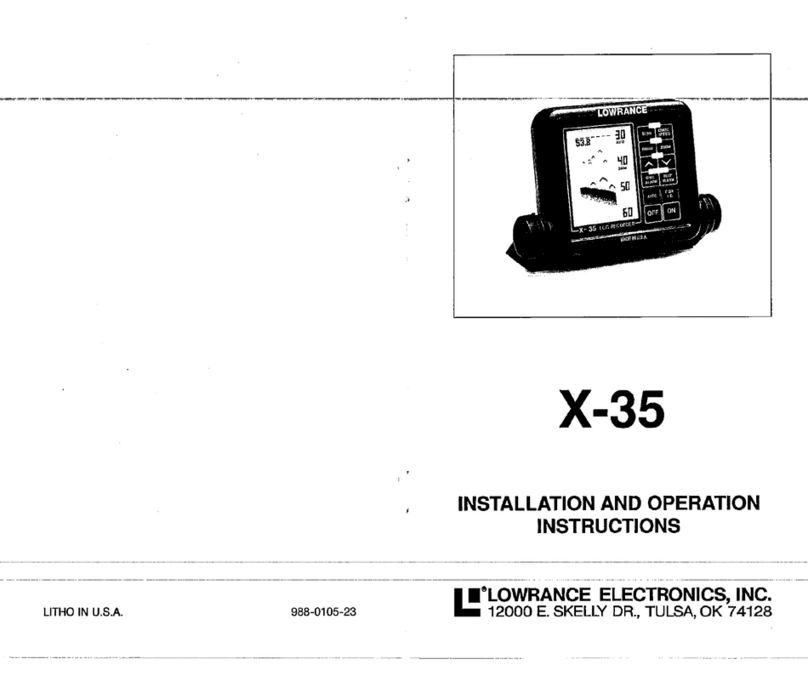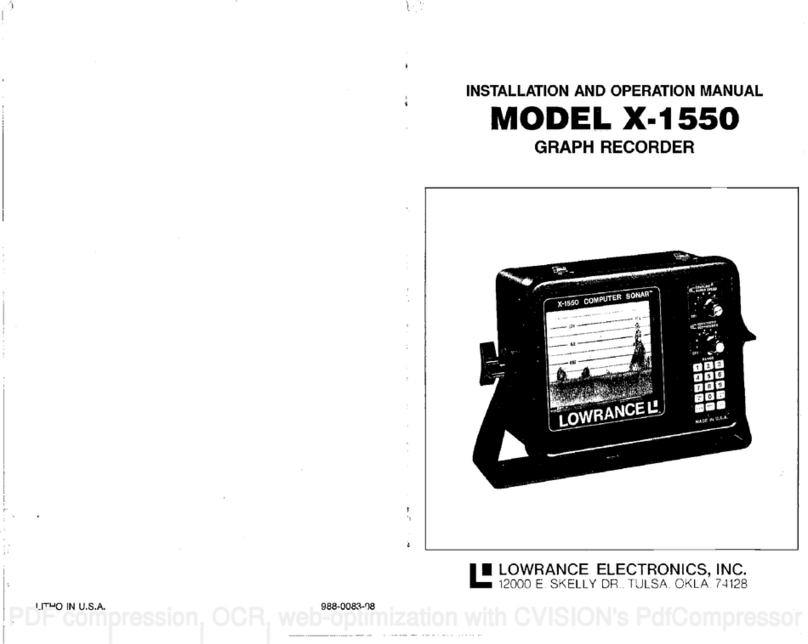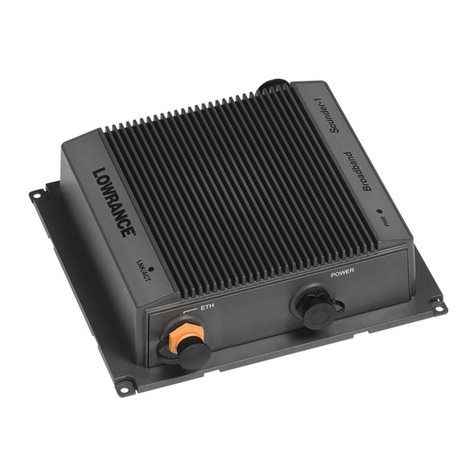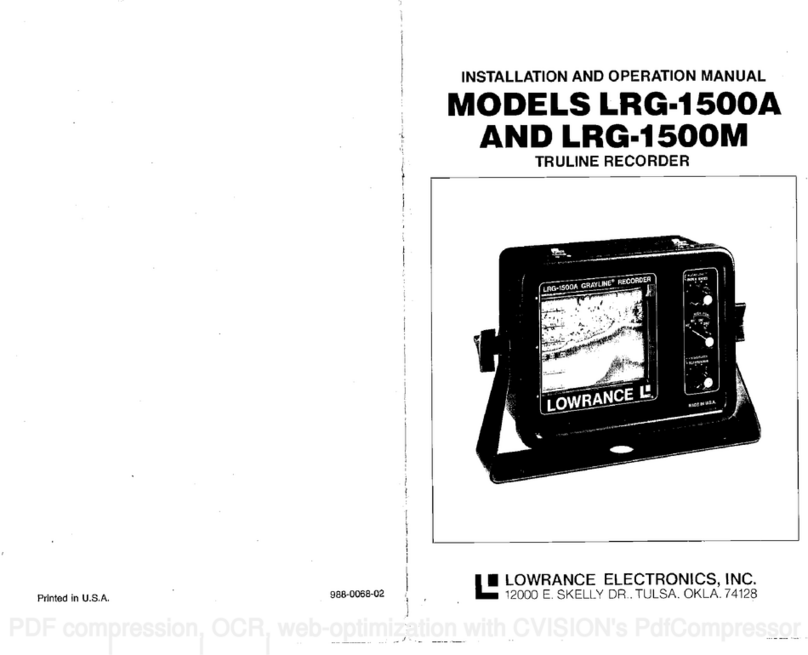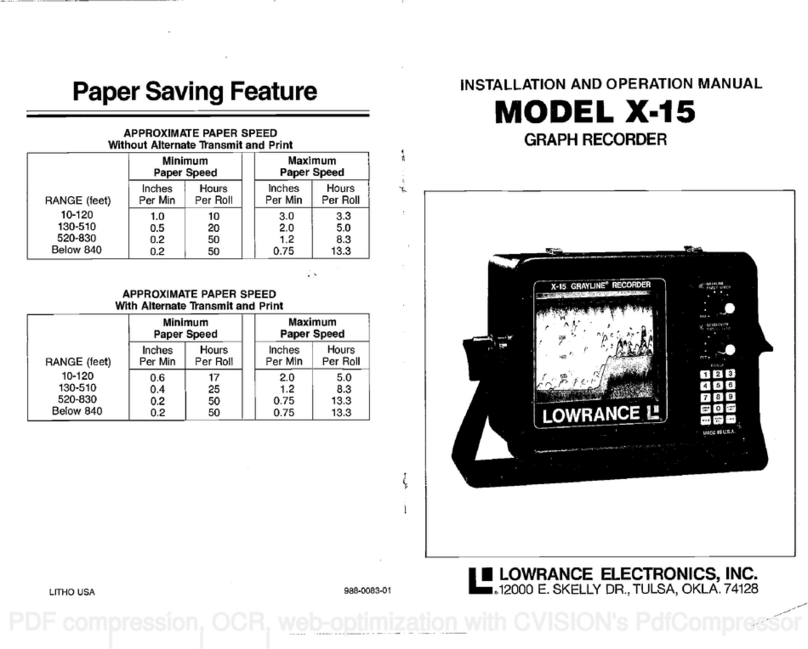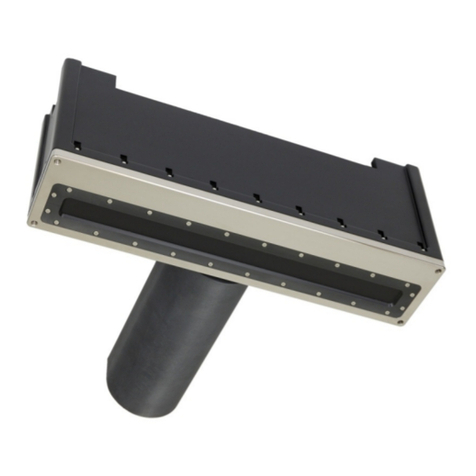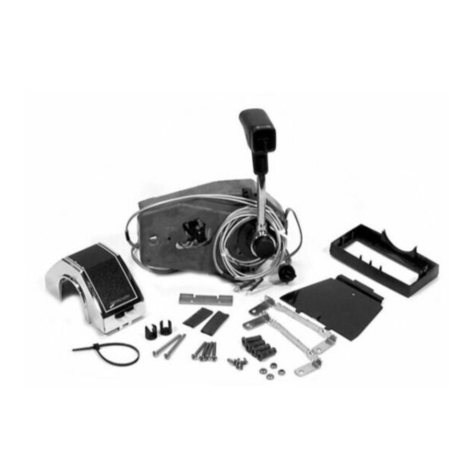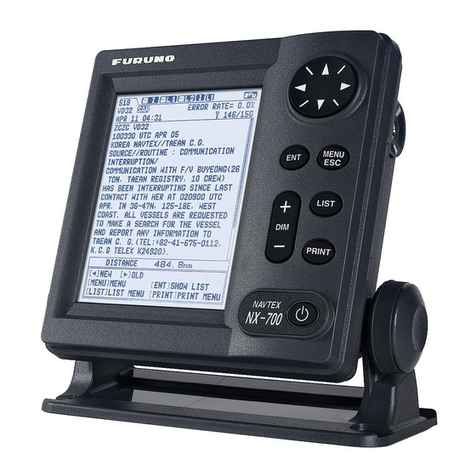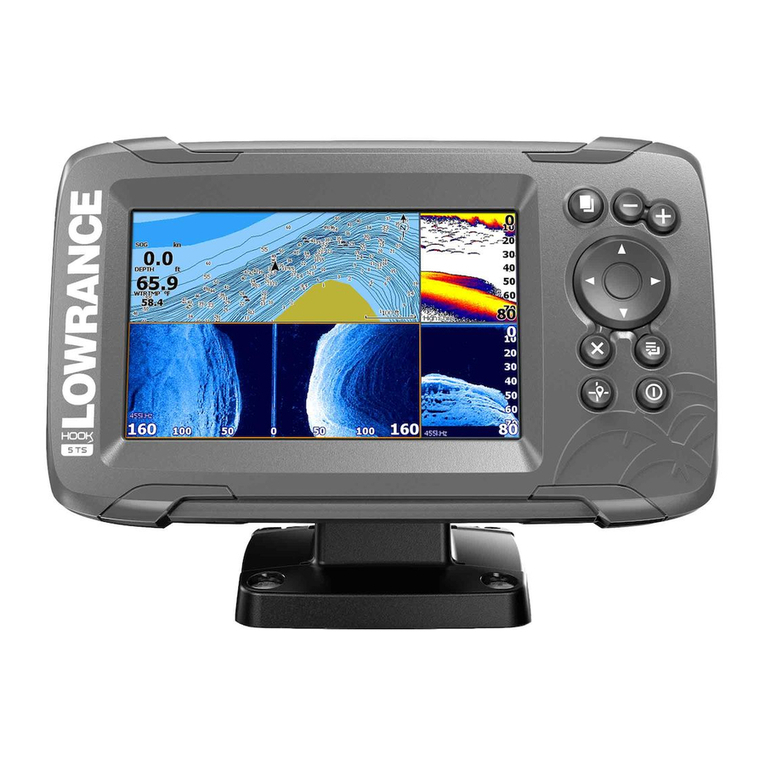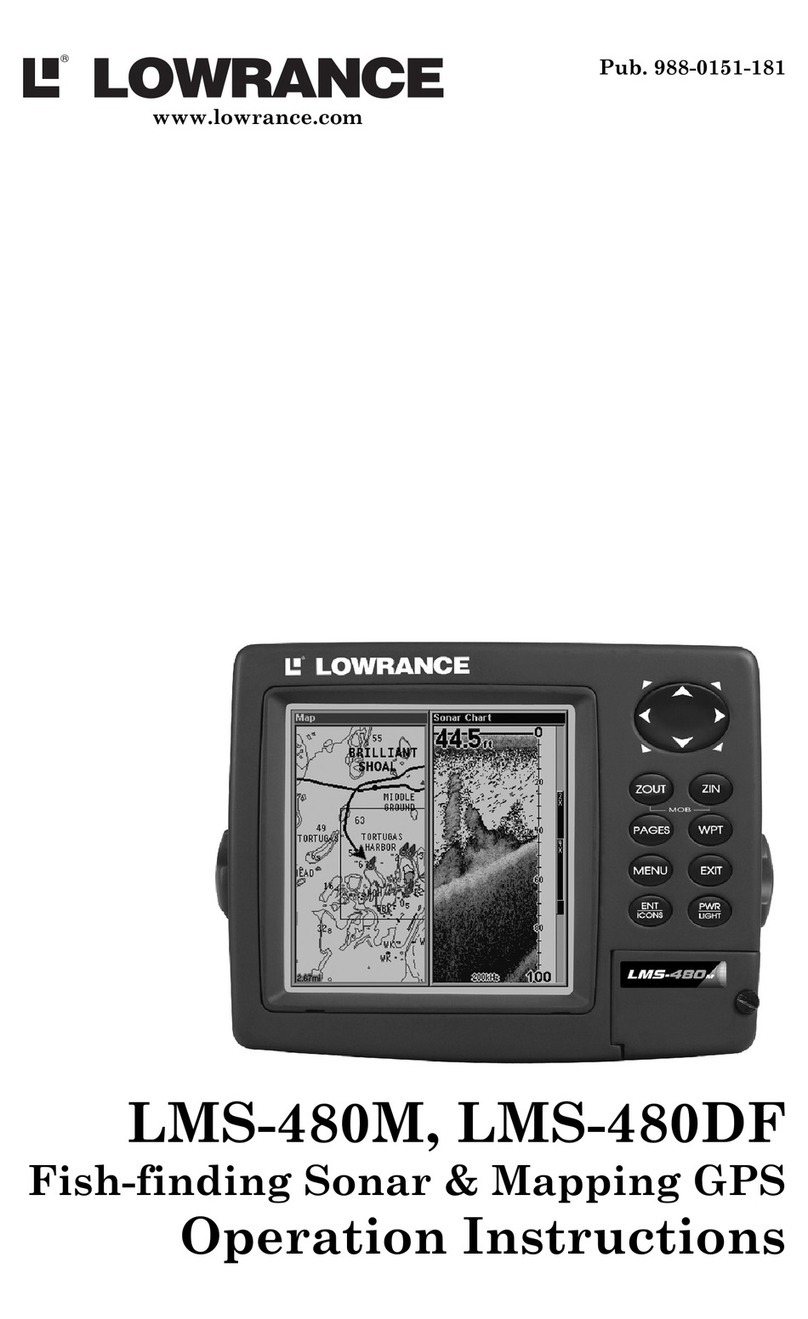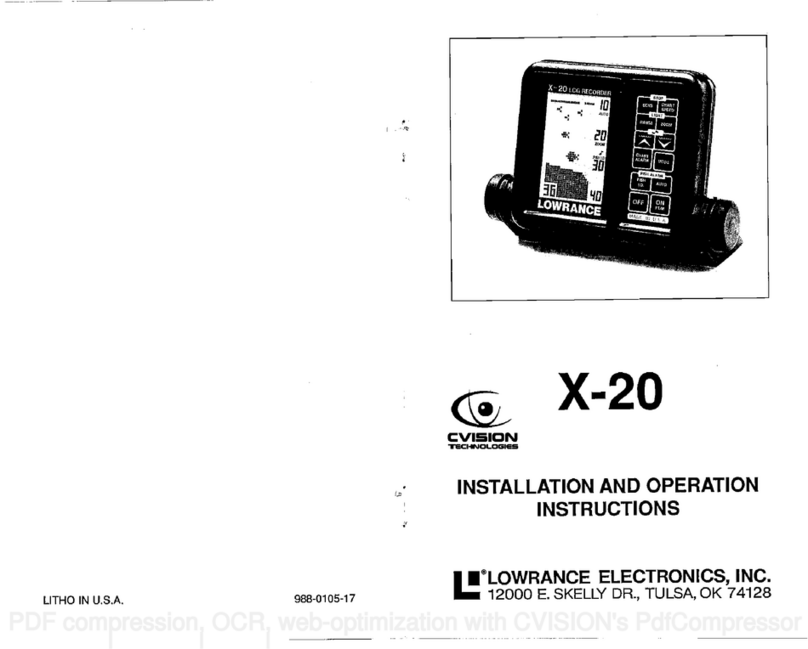
WHAT ITis DOSECTION
Sonar"isanabbreviation meaning soundnavigationand
ranging." Itwas
developed asameansoftrackingenemy submarinesduring
WorldWarII.
Sound — when
transmitted throughwater
—travelsatapproximately 4800
feetpersecond as compared to1100through air.
SOUND TRAVELS MORETHAN 4TIMES
_____
FASTER IN WATERASIT DOES IN AIR
- )DDDflflDDflDflfl))flflflfl))I
4800 FEET PER SECOND IN WATER
Insimple terms, anelectrical impulse isconvertedintoasoundwave and
transmitted intothewater.Whenthe
wavestrikesanobstacle, itrebounds.
Since thespeed ofsound inwaterisknown —and constant
—thetime
betweenthetransmittedsignal andthereceivedechocanbemeasuredand
thedistancetotheobstacledetermined. Anelectronic sonarunitcanboth
sendandreceive thesound waves, aswellastime, measure, and record
them.
PRINCIPLE OFSONAR
SIGNAL
TRANSMITTED I
ANDRECEIvED
L (((((((N
Fig.2 SIGNALSENT BY LOCATOR BOUNCES BACKFROM
TARGEtTIMELAPSE INDICATES DISTANCE TOTARGET
TheLowrance ModelLRG-1510C
graph recorderisa
compact unit
specif
i-
callydesigned forsportfishermen. Ithas900watts typical peak-to-peak
power,(112
wattsRMS)
features
easy
toread
straight line recordings,hasa
gray line"capability, and provides easy-to-read graphs withsuchclarity
thateven asingle fish hovering just nine inches offthebottom is easily
identified.
Full control of the systemis at your finger tips to meet thechanging
demands ofvarying bottom conditions, waterdepth and boat speed. You
can selectthe unit's sensitivity setting, suppression level, depth range,
paper speed, andthedegree of grayline"used toenhance
the recorded
information. Thepatented Lowrancevariablesuppression system not
only
filtersoutfalsesignalswithout
distorting therealones, butissynchronized
withthe
gray
linefunctiontoprovide clear
signalsunderallconditions. The
permanent recordofwhat
your
sonarhas"seen"
isrolledand storedinside
the case.
2
Do carry asparefuse, sty!us belt, and rollofpaper.
Do usethetape
fromanew rollorpaper
toattachittothetake-up spool.
Do usethe
empty
cardboardcorefrom
thelast rollofpaper
onthe
take-up
post.
Docarry apencil to make notes onthe paper.
Dokeep the recorded graphs
forfuturereference.
Docleanthe stylus beltandwheelswith alcohol afterevery five rolls of
paper.
DON'TSECTION
DON'T OPEN THE CASE WHEN THE UNITISON.
Don't
pull theplaten assembly downwhenthestylus is atthefront,
Don'tstore anyobjectsinside the caseorbehind the viewing
door.
Don't
forgetto tape thepapertothetake-up
core.
Don'trotatethe stylus beltup.
Don'tuse oilycloths, strongsolvents orabrasive cleansers.
TROUBLESHOOTING
SYMPTOM WHATTO DO
B. On/Off switch is "ON", have
zeromark, butnoechoes orbot-
tomsignals
A. Check fuse;check connections
at battery;tighten power cord
connector
D. Recordermarksare faintordim D, Cleanviewing door;replace the
stylus
E. Bendthe
stylusslightly
toreduce
pressureon paper.
A. On/Offswitch is "ON", but the
stylus and paper don'tmove
C. Theunit isON, but paper does
notmove
B. Be sure the transducer is plug-
ged into the unitand thetrans-
ducerisincontactwiththewater
C. Tape Paper
to cardboard spoo1
ontake-up post
E. Recordedmarksareveryheavy;
paperistornby stylus
23
PDF compression, OCR, web-optimization with CVISION's PdfCompressor
